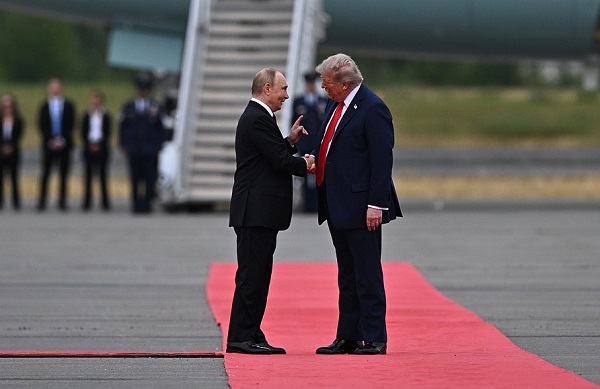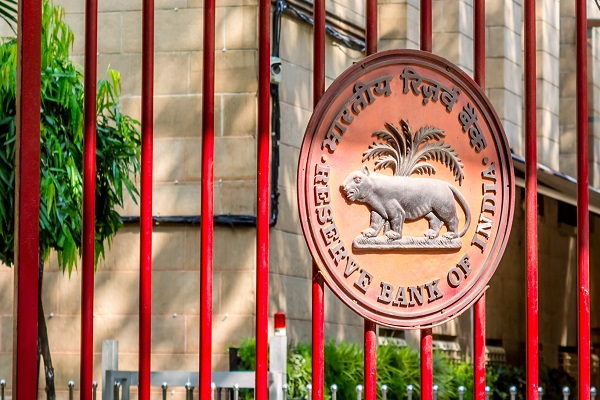.png)
Letter and Spirit: What the Latest US Sanctions on Russian Oil Really Mean
Washington’s latest sanctions target Russia’s oil heart, yet the world remains unshaken. Between the letter of economic coercion and the spirit of political will lies a global market that has learned how to adapt.


Dr. Srinath Sridharan is a Corporate Advisor & Independent Director on Corporate Boards. He is the author of ‘Family and Dhanda’.
October 27, 2025 at 1:48 PM IST
The latest US measures strike at the very core of Russia’s energy apparatus. Rosneft and Lukoil, together responsible for over 5% of global oil supply, now stand in Washington’s crosshairs. The US Treasury has set a brief grace period, allowing companies until November 21 to unwind their dealings, after which the sanctions’ full force will take effect.
On paper, the ‘October sanctions’ against Russia’s largest oil producers read like a classical coercive remedy: targeted, precise, and designed to choke a vital artery of state revenue. In trading rooms from Frankfurt to Mumbai, the names Rosneft and Lukoil carry weight — yet the market’s reaction, though immediate, was not panicked.
Crude oil prices spiked briefly, energy analysts issued their cautionary notes, and then the screens settled into routine rhythm. Within hours, traders returned to their usual calculus: how much of this is real policy change, and how much of it is performative signalling in an already crowded sanctions theatre?
For Moscow, the new sanctions promise immediate discomfort but not decisive damage. Rosneft and Lukoil — together responsible for nearly two-thirds of Russia’s 4.4 million barrels of daily crude exports — are too deeply entrenched in the global energy matrix to be easily excised. The Kremlin may absorb a temporary loss, a reality even President Putin has tacitly conceded, yet its fiscal nerve remains intact. If there is collateral pain to be felt, it is likely to ripple first through Europe’s supply lines rather than Russia’s war chest.
Yet before we interpret calm as confidence, six questions demand our attention.
First, what precisely do these sanctions prohibit — and where does the line blur between lawful trade and indirect facilitation?
But there seems a larger story — of how global markets, after two years of rolling restrictions, have learned to read the letter of Western sanctions differently from their spirit. The legal text of these new measures is clear enough: US authorities have blacklisted Russia’s principal energy giants, prohibiting American entities from dealings that sustain their export lifelines. The spirit, however, is more complex — to drain the Kremlin’s fiscal reservoir without draining the world’s oil supply, to wound without rupturing.
The sanctions have been introduced with the usual rhetorical gravity. They are meant to tighten the economic vise on Moscow, to punish aggression. But for all their weight, the world’s oil ecosystem has not blinked in alarm. Global energy systems have developed antibodies to the fever of sanctions.
Part of this resilience lies in the structure of the oil market itself. Unlike gas or rare earths, crude has multiple sellers, buyers, and routes. The same molecule of Russian Urals crude can find its way to a Chinese port through a Singapore intermediary or reach an Indian refinery aboard a Liberian-flagged ship financed in Dubai. Price, insurance, and destination can all be intermediated or disguised in a web of contracts. Over the past two years, as Western sanctions hardened, an entire shadow fleet of tankers emerged, operating outside the conventional circuits of compliance. The market, in short, found new arteries for old flows.
The other reason is more psychological than structural. Sanctions fatigue has set in. Since 2022, the global economy has been through multiple rounds of punitive measures — price caps, embargoes, restrictions on banking and shipping. Each was announced as potentially decisive; each was partially blunted by evasion or exemptions. The repetition has taught markets to discount drama. They have learned that what matters is not the announcement but the enforcement — whether the insurance firms in London, the payment clearers in New York, and the shipping registries in Athens follow through.
To understand why the latest measures have been met with stoic composure, one must also consider the geopolitical choreography at play. The United States has chosen to act unilaterally first, with allies aligning selectively. The European Union, balancing energy needs and domestic inflation pressures, has matched only parts of the US stance. Asian buyers — notably India and China — remain pragmatic, watching the enforcement horizon before recalibrating their supply chains. For them, the issue is not moral solidarity but operational continuity.
India’s position is particularly intricate. Over the last two years, Russian oil — offered at steep discounts — has become a key element in India’s energy equation. It has helped moderate inflation, stabilise input costs, and strengthen refining margins. The new sanctions may narrow that window, but they do not close it. Indian refiners can, and will, adapt.
As Commerce Minister Piyush Goyal recently put it succinctly, “India is talking to America. But we will not negotiate with a gun pointed at our heads. So if there’s a tariff on us, we have accepted it. We will look for newer markets as well.” It is a dignified reminder that India’s diplomacy is rooted in economic sovereignty, not strategic subservience.
This is where the nuance between letter and spirit becomes policy art. New Delhi is unlikely to violate the explicit prohibitions of American law. But it can operate comfortably within the grey zones — using non-dollar payments, third-party traders, and sovereign shipping cover. Such manoeuvres do not undermine India’s credibility; they exemplify its strategic autonomy. In a world where energy security and geopolitical alignment rarely coincide, agility is virtue.
It is plausible that both China and India are opting for an optical reduction in Russian oil purchases rather than a substantive one. The upcoming ASEAN Summit in Kuala Lumpur, where the United States will participate at a high level, provides a stage for diplomatic signalling — a setting where measured restraint appears statesmanlike. By briefly slowing or publicly moderating their Russian crude imports, Beijing and New Delhi can project attentiveness to Western sensitivities without compromising their core energy calculus. Notably, Prime Minister Narendra Modi’s decision to attend the summit virtually is a deft diplomatic manoeuvre — a subtle way to engage without offering the optics of proximity or allowing any perceived one-upmanship that Washington might attempt. It is a move both brilliant and deliberate, reinforcing India’s posture as a sovereign balancer in an increasingly performative geopolitical theatre.
Meanwhile, Russia, though constrained, is far from crippled. It has built parallel systems of trade settlement, expanded its tanker fleet, and deepened its ties with non-Western markets. Sanctions have raised its transaction costs, not extinguished its trade. What sanctions have achieved is the creation of two partially decoupled energy circuits — one Western, rule-bound and transparent; the other informal, opaque, and politically flexible. That bifurcation may endure long after the war ends.
The deeper question, therefore, is not whether these sanctions will “work” — a binary rarely useful in complex geopolitics — but how they will reshape the architecture of global energy commerce. Every new restriction accelerates the fragmentation of financial systems, the diversification of shipping insurance, and the proliferation of alternate clearing mechanisms. For policymakers in Delhi, Beijing, or Riyadh, this fragmentation is not merely a risk but an opportunity to diversify dependence away from any single axis of power.
Yet there is a moral irony at play. Sanctions are meant to isolate the transgressor, but they often isolate the sanctioning nations from their own strategic leverage. The more Washington weaponises access to its financial systems, the stronger the incentive for others to build substitutes.
For India, this episode offers both caution and clarity.
The caution: never allow external moral pressure to undermine internal energy stability.
Which it is already doing with leadership on this from political leadership.
The clarity: the world of sanctions is no longer a Western monopoly; it is an arena of contesting legitimacies. The goal should be to preserve access — to every market, every supplier, and every corridor — while maintaining credibility as a responsible stakeholder in global order.
The world has not panicked yet about oil, because it has learned to manage sanctions and tariffs coercion without chaos. That, in itself, is progress — uneasy, imperfect, but real. It shows that the age of instant global contagion is giving way to an era of managed turbulence, where nations act not in reflex but in calibration.



